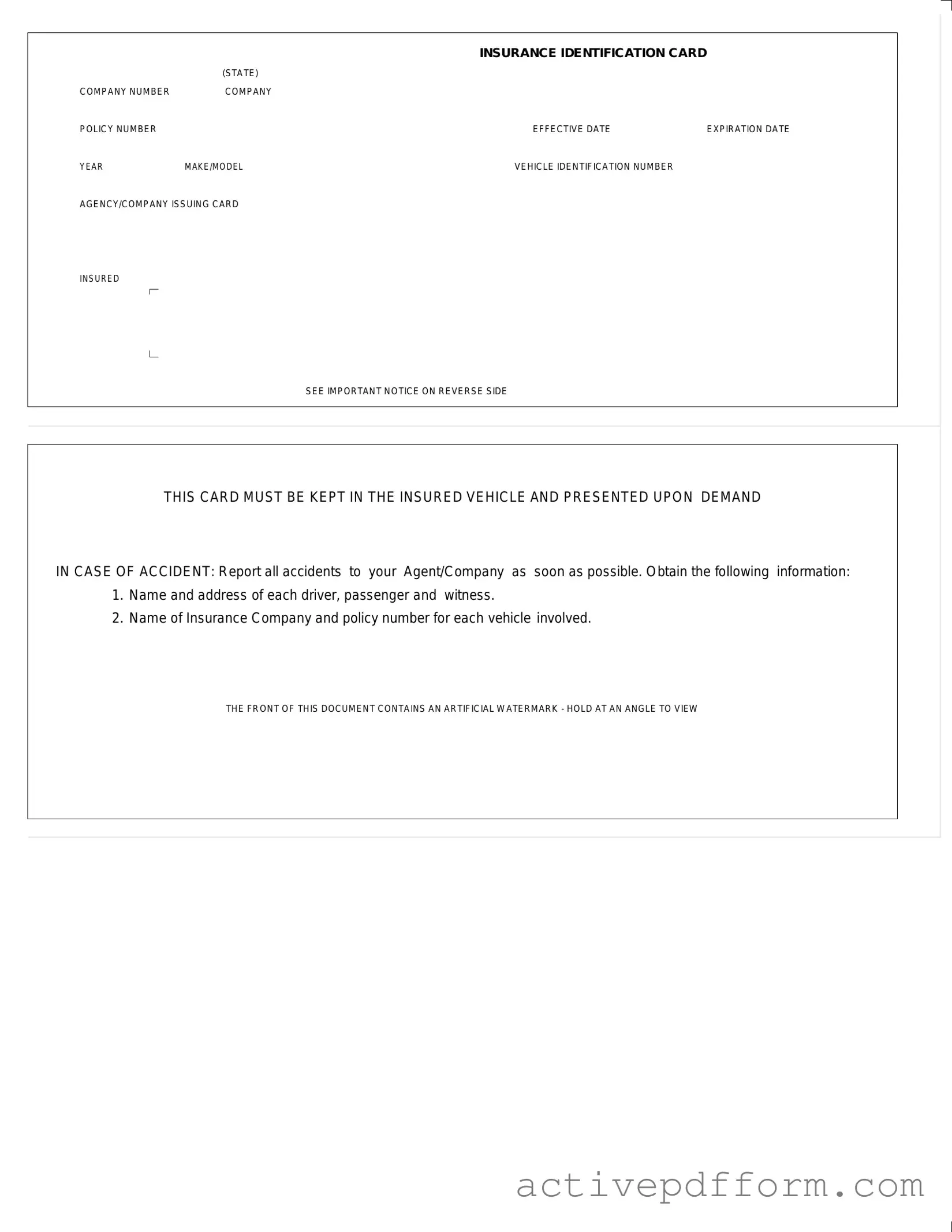What is an Auto Insurance Card?
An Auto Insurance Card is a document that proves you have valid car insurance. It contains important information about your insurance policy, including the company name, policy number, effective dates, and vehicle details. You must keep this card in your vehicle and present it if requested by law enforcement or in case of an accident.
What information is included on the Auto Insurance Card?
Your Auto Insurance Card includes several key details: the insurance company name, company number, policy number, effective and expiration dates, vehicle make and model, and the Vehicle Identification Number (VIN). This information is essential for verifying your coverage and ensuring you comply with state requirements.
Why is it important to keep the Auto Insurance Card in the vehicle?
It is crucial to keep the Auto Insurance Card in your vehicle because it serves as proof of insurance. If you are involved in an accident or stopped by law enforcement, you must present this card. Failing to do so can result in penalties, including fines or even license suspension.
What should I do if I lose my Auto Insurance Card?
If you lose your Auto Insurance Card, contact your insurance agent or company immediately. They can issue a replacement card for you. It’s important to have a valid card on hand to avoid any complications while driving.
What should I do in case of an accident?
In the event of an accident, report it to your insurance agent or company as soon as possible. Gather information from all parties involved, including names and addresses of drivers, passengers, and witnesses. Also, note the insurance company and policy numbers for each vehicle involved. This information will help facilitate the claims process.
What is the significance of the watermark on the Auto Insurance Card?
The front of the Auto Insurance Card features an artificial watermark. This watermark is a security measure to prevent fraud. To view it, hold the card at an angle. If you notice any discrepancies or if the watermark is missing, contact your insurance company for clarification.

